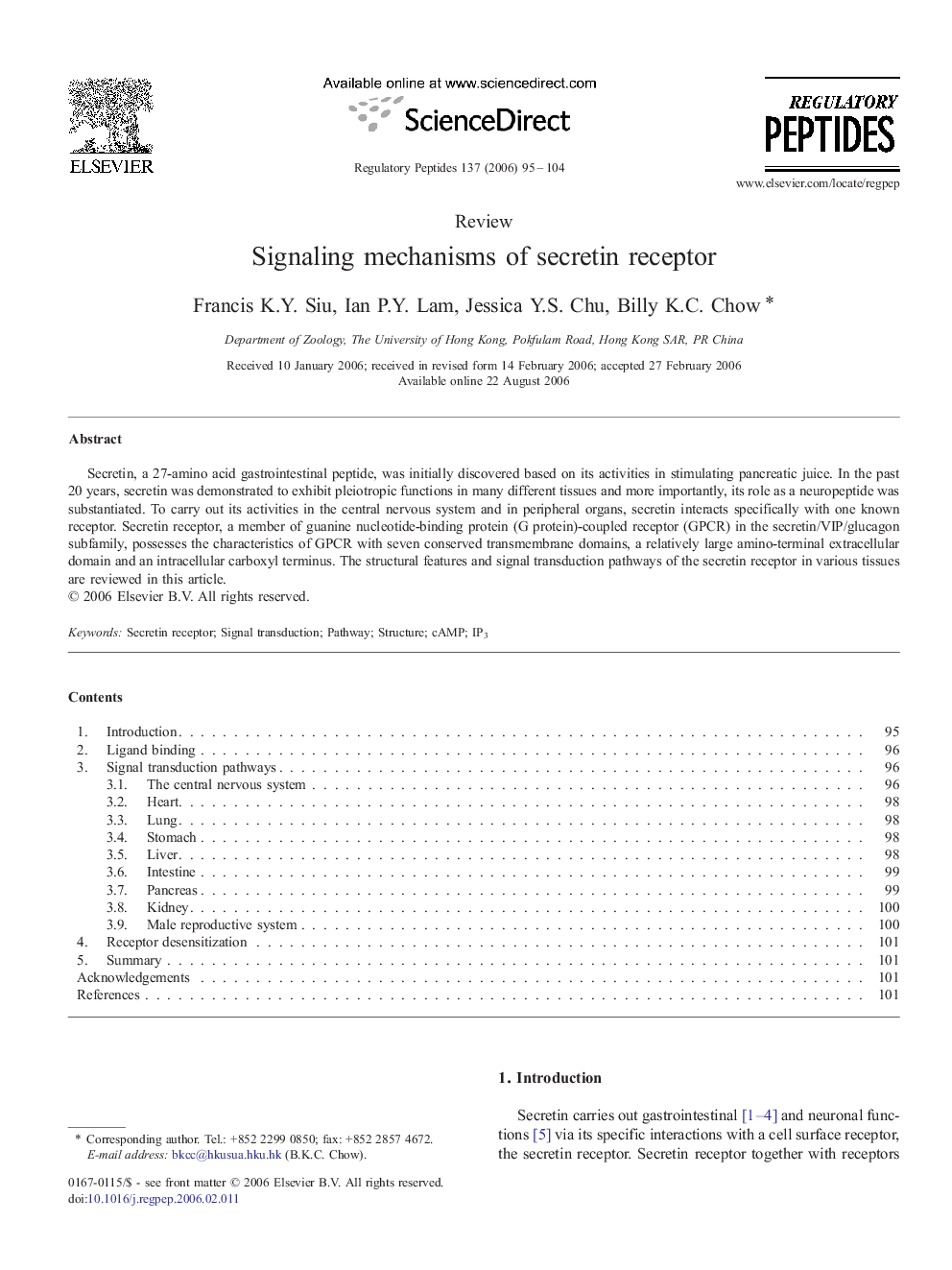| Article ID | Journal | Published Year | Pages | File Type |
|---|---|---|---|---|
| 2023558 | Regulatory Peptides | 2006 | 10 Pages |
Secretin, a 27-amino acid gastrointestinal peptide, was initially discovered based on its activities in stimulating pancreatic juice. In the past 20 years, secretin was demonstrated to exhibit pleiotropic functions in many different tissues and more importantly, its role as a neuropeptide was substantiated. To carry out its activities in the central nervous system and in peripheral organs, secretin interacts specifically with one known receptor. Secretin receptor, a member of guanine nucleotide-binding protein (G protein)-coupled receptor (GPCR) in the secretin/VIP/glucagon subfamily, possesses the characteristics of GPCR with seven conserved transmembrane domains, a relatively large amino-terminal extracellular domain and an intracellular carboxyl terminus. The structural features and signal transduction pathways of the secretin receptor in various tissues are reviewed in this article.
